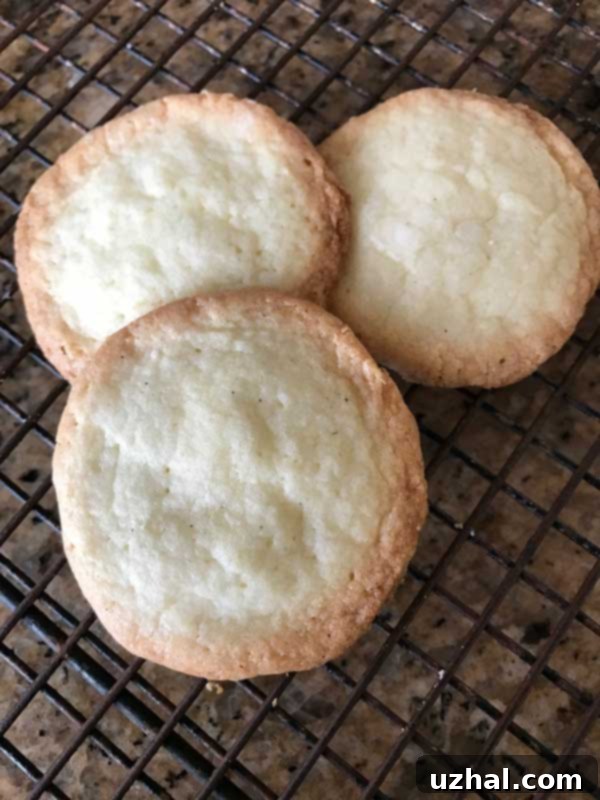Homemade Brown Edge Wafers: Rediscover the Beloved Swedish Butter Cookie with Potato Starch
For many, the mention of butter cookies immediately conjures images of those exquisitely shaped “Danish” varieties, often found nestled in iconic blue tins. So, when I first stumbled upon a recipe for Swedish Butter Cookies printed on the side of a Swan potato starch box, my mind naturally drifted to something akin to delicate shortbread. Imagine my delightful surprise! The cookies baked from that unassuming box recipe were strikingly, almost identically, reminiscent of Nabisco’s cherished Brown Edge Wafers – a cookie that sadly vanished from grocery store shelves years ago, leaving a void in the hearts of many nostalgic snackers.
This unexpected culinary discovery sparked a journey to recreate that distinct flavor and texture, leading me to perfect a homemade version that not only captures the essence of those classic wafers but arguably surpasses them. This article delves into the fascinating history of the Brown Edge Wafers, explores the unique role of potato starch in achieving their signature crispness, and provides an adaptation of the original recipe so you can bring this beloved cookie back into your home kitchen.
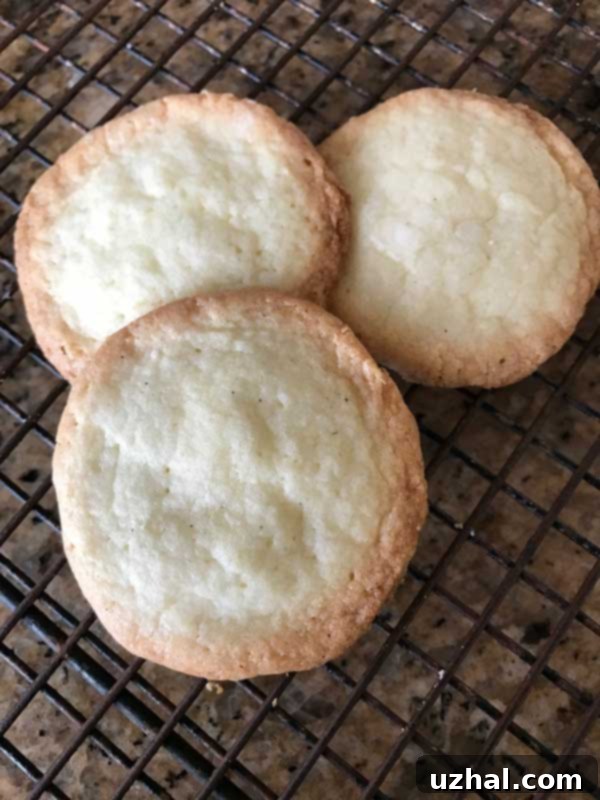
The Mystery of Brown Edge Wafers: A Discontinued Delight
The disappearance of Nabisco’s Brown Edge Wafers has long been a source of lament among cookie connoisseurs. An old Wall Street Journal article from 1996 sheds some light on their fate, noting them as a slow-selling product. It’s a plausible reason why Nabisco, a company constantly optimizing its product line for mass appeal and profitability, might have made the difficult decision to discontinue them. Perhaps they simply couldn’t compete with the surging popularity of other cookies in the market at the time, fading into obscurity as consumer tastes evolved.
However, given the recent trend of food companies reintroducing nostalgic “throwback” items, one can’t help but wonder if Nabisco might consider bringing back the Brown Edge Wafers. The market for vintage snacks and limited-edition releases is robust, and there’s a clear demand for these specific cookies. Moreover, with the growing awareness and demand for gluten-free options, there’s a unique opportunity. Since potato starch is a key ingredient in their characteristic texture, Nabisco could potentially re-work the recipe slightly, market them as a gluten-free delicacy, and tap into a new, eager audience. Are you listening, Nabisco? The public is ready for a comeback!
Unlocking Homemade Perfection: Why These Brown Edge Wafers Are Better
While we wait (and hope) for an official return, the good news is that these homemade Brown Edge Wafers are not just a satisfactory substitute; they are, in many ways, superior to the originals. The magic lies in the fresh ingredients, the absence of preservatives, and the ability to customize flavors to your liking. The recipe, originally found on the back of the Swan potato starch box, serves as an excellent foundation, but through experimentation, I’ve developed an adaptation that truly perfects this classic. Of course, if you happen to find a Swan box with the recipe still printed on it, feel free to follow that too – brands often rotate their featured recipes.
The secret weapon, the ingredient that truly defines the texture of these wafers, is potato starch. It’s what gives them that incredibly delicate, almost ethereal crispness that was so characteristic of Nabisco’s version. Without it, the cookies simply wouldn’t have the same light, melt-in-your-mouth quality that makes them so addictive. This ingredient elevates them beyond a standard butter cookie, providing a unique mouthfeel that sets them apart.
The Magic of Potato Starch: Starch vs. Flour & Beyond
Don’t let the specific requirement for potato starch intimidate you. It’s a remarkably versatile ingredient that you’ll be glad to have in your pantry. It’s crucial to understand the distinction between “potato starch” (sometimes labeled “potato starch flour”) and “potato flour.” They are *not* interchangeable. Potato starch is a refined powder extracted from potatoes, primarily composed of pure starch. It’s white, fine, and contributes to a very delicate, light texture and crispness in baked goods. Potato flour, on the other hand, is made from whole, dried, and ground potatoes; it’s denser, retains more potato flavor, and behaves more like a traditional flour, absorbing more liquid and resulting in a heavier bake.
For these Brown Edge Wafers, potato starch is paramount for achieving that signature crisp, airy texture. Its unique properties allow the cookies to spread thinly and bake up with a delightful snap. But its utility extends far beyond these wafers. Potato starch is an excellent thickening agent for gravies, sauces, and soups, providing a clear, glossy finish without the cloudiness associated with cornstarch. It’s also a common component in many gluten-free flour blends, contributing to structure and moisture, and is famously used in delicate baked goods like angel food cake, adding to their tender crumb. So, stocking up on potato starch for this recipe means you’ll have a valuable ingredient for a host of other culinary applications.
Potato Starch Brands & Elevating Flavors
When I initially developed this recipe, I primarily used Swan brand potato starch. Over time, I’ve discovered other excellent options. Update: I’ve successfully tested with Streit’s potato starch, which yielded equally fantastic results. Since my initial post, many more brands of potato starch have become readily available, especially on Amazon, offering wider accessibility to this essential ingredient. While I’ve personally only tested with Swan and Streit’s for these wafers, the consistent performance suggests that other high-quality potato starch brands should work well too, though minor adjustments in measurement (especially by weight) might be needed.
Beyond texture, flavor is where these homemade cookies truly shine. Many people recall the original Nabisco wafers having a subtle citrus note. While my memory of the exact citrus profile is a bit hazy, I can confirm that adding a touch of citrus elevates these cookies wonderfully. A little Boyajian lemon oil or orange oil imparts a vibrant, authentic fruit essence. For a more natural approach, finely grated lemon zest or orange zest works beautifully, infusing the cookies with bright, aromatic notes. My latest batch, for instance, featured a lovely combination of vanilla paste and about ½ teaspoon of orange zest, creating a sophisticated and irresistible flavor profile.
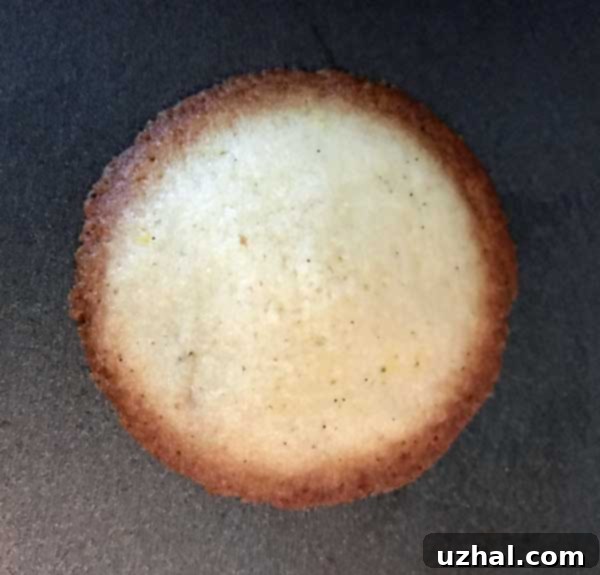
Ingredient Precision: Demystifying Potato Starch (Bob’s Red Mill & Beyond)
As touched upon earlier, a critical point for success in this recipe is understanding the difference between “potato starch” and “potato flour.” When I first began baking these wafers, I used “Swan brand potato starch flour,” which despite the “flour” in its name, is indeed pure potato starch. This nomenclature can be quite confusing, as there is a distinct product called “potato flour,” made from whole, dried, and ground potatoes, which behaves very differently in baking and is *not* suitable for this recipe. Always ensure you are using pure potato starch for that characteristic delicate crispness.
My recent tests included Bob’s Red Mill brand potato starch, a widely available and reliable option. I noticed a slight variation in density compared to other brands: 1 cup of carefully spooned (not packed) Bob’s Red Mill potato starch weighed approximately 160 grams, whereas other brands I’ve used previously hovered around 140 grams. This highlights the importance of weighing your ingredients for consistent results, especially in baking, where precision can make a significant difference. Using a kitchen scale ensures accuracy regardless of brand variations or how densely an ingredient might be packed into a measuring cup.
A Gluten-Free Dream: Brown Edge Wafers for Everyone
For those with gluten sensitivities or dietary preferences, the exciting news is that these Brown Edge Wafers are wonderfully adaptable to a gluten-free diet. I finally had the opportunity to rigorously test this recipe with a gluten-free flour blend, and the results were overwhelmingly positive. The potato starch, as directed, remained a constant, providing its essential textural contribution. The key modification was substituting the all-purpose flour with an equal *weight* (not volume) of Bob’s Red Mill All-Purpose Baking Blend. This emphasis on weight is crucial for gluten-free baking, as different GF flour blends can have varying densities.
The gluten-free wafers emerged from the oven looking remarkably similar to their traditional counterparts, retaining the beautiful brown edges and delicate appearance. In terms of texture, they were incredibly close, with just a slightly more detectable grittiness, likely due to the rice flour component often found in commercial gluten-free blends. This isn’t a detrimental characteristic; rather, it’s a subtle difference that someone accustomed to gluten-free baked goods might notice, but it certainly doesn’t detract from their overall deliciousness. This successful adaptation means that more people can now enjoy the nostalgic crunch of these unique butter cookies.
Batch Size Flexibility: Making a Half Batch
If you’re eager to try these delightful Brown Edge Wafers but don’t want to commit to a full batch, you’ll be pleased to know that the recipe scales down beautifully. Halving the ingredients works perfectly, even for the trickiest component: the egg. To accurately halve a large egg, simply crack it into a small cup, beat it thoroughly with a fork, and then either weigh out 24 to 27 grams (which is typically half the weight of a large egg) or measure out approximately 2 tablespoons. This simple trick ensures precise measurements and consistent results when making a smaller batch, allowing you to enjoy a freshly baked treat without an overwhelming quantity of cookies.
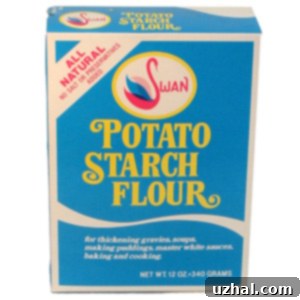
Some Related Recipes for Your Baking Adventures
If you enjoy the delicate crispness and buttery goodness of these Brown Edge Wafers, you might also be interested in exploring other unique and nostalgic cookie recipes. Expanding your baking repertoire can lead to many delightful discoveries:
- Matzo Meal Chocolate Chip Cookies
- Passover Chocolate Chunk Bars
- Sugar Wafers
- Cream Cheese Filled Kolaches
- Homemade Famous Chocolate Wafers
Brown Edge Wafers Recipe: Your Guide to Nostalgic Perfection
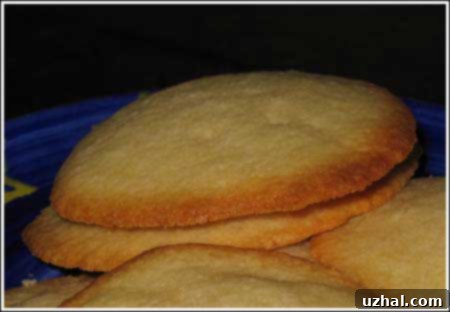
Brown Edge Wafers
Anna
Pin Recipe
Ingredients
- 1 cup butter, salted (unsalted okay, but you’ll need to add ¾ teaspoon salt) (235 grams)
- 1 cup sugar (200 grams)
- 1 large egg (54 grams)
- 1 ½ teaspoon vanilla (See notes about flavor, consider citrus zest/oil)
- 1 cup potato starch (not potato flour) (140 to 160 grams)**
- 1 cup all-purpose flour (or a gluten-free all-purpose baking blend for GF option) (127 to 140 grams)
Instructions
-
In a large mixing bowl, cream together the softened butter and granulated sugar until light and fluffy. This typically takes about 2-3 minutes with an electric mixer. Then, beat in the large egg and vanilla extract (or your chosen flavorings like citrus oil/zest) until well combined. Scrape down the sides of the bowl to ensure everything is incorporated.
-
In a separate bowl, whisk together the potato starch (ensure it’s starch, not flour!) and all-purpose flour. Gradually add this dry mixture to the wet butter mixture, stirring on low speed until just combined. Be careful not to overmix, as this can lead to tough cookies. Once the dough comes together, cover it and chill for at least one hour in the refrigerator. Chilling helps the dough firm up and prevents excessive spreading during baking, contributing to the crisp texture.
-
Preheat your oven to 375 degrees F (190 degrees C). Prepare your cookie sheets by lining them with parchment paper or leaving them ungreased (see notes for optimal browning). Roll small portions of the chilled dough into uniform balls, roughly 1 inch in diameter. Place these balls onto the prepared cookie sheets, spacing them about 1.5-2 inches apart. Gently press each ball with the palm of your hand or the bottom of a glass to flatten slightly. Bake for 10 minutes, or until the edges are beautifully golden brown. The center of the cookies should still appear light, as they will crisp up upon cooling.
Notes
Flavor Enhancements: This is an excellent recipe to showcase high-quality vanilla extract or vanilla bean paste (such as Penzey’s or Nielsen-Massey). For a delightful twist, consider adding citrus. My personal favorite combination is 1 teaspoon of vanilla bean paste alongside 1 teaspoon of fresh orange zest, which offers a bright and aromatic lift. Lemon zest or a few drops of food-grade lemon or orange oil can also create a wonderful flavor reminiscent of the originals.
Butter and Salt: The recipe calls for salted butter, which adds a crucial depth of flavor. If you opt for unsalted butter, be sure to add approximately ¾ teaspoon of fine salt to the dough. Omitting salt with unsalted butter will result in cookies that taste flat and lack the necessary balance to the sweetness.
Baking Sheet Impact: The type of baking sheet you use and whether it’s lined significantly influences the brown edge formation and how much the cookies spread. Parchment paper tends to result in a slightly less pronounced brown edge. An ungreased, light-colored or grey metal cookie sheet often yields a wider, more prominent brown area. Conversely, a greased cookie sheet can cause the cookies to spread more extensively, making them thinner and potentially too brittle. Experiment to find your preferred level of crispness and browning.
Gluten-Free Adaptation: For a gluten-free version, substitute the all-purpose flour with an equal *weight* (not volume) of your preferred gluten-free all-purpose baking blend. Results are excellent, with a texture very close to the original, though a very slight grittiness might be detected due to rice flour components in some GF blends.
